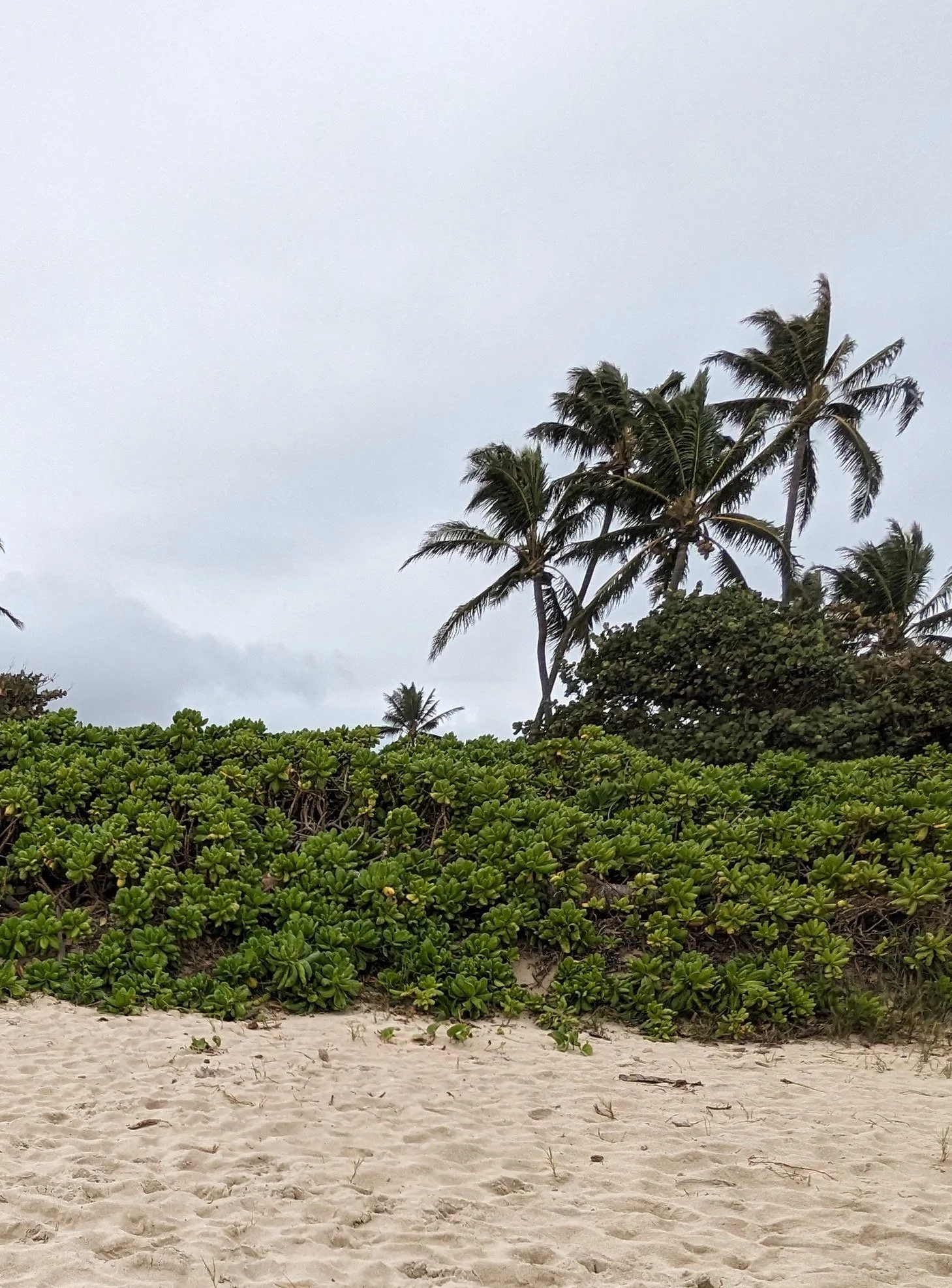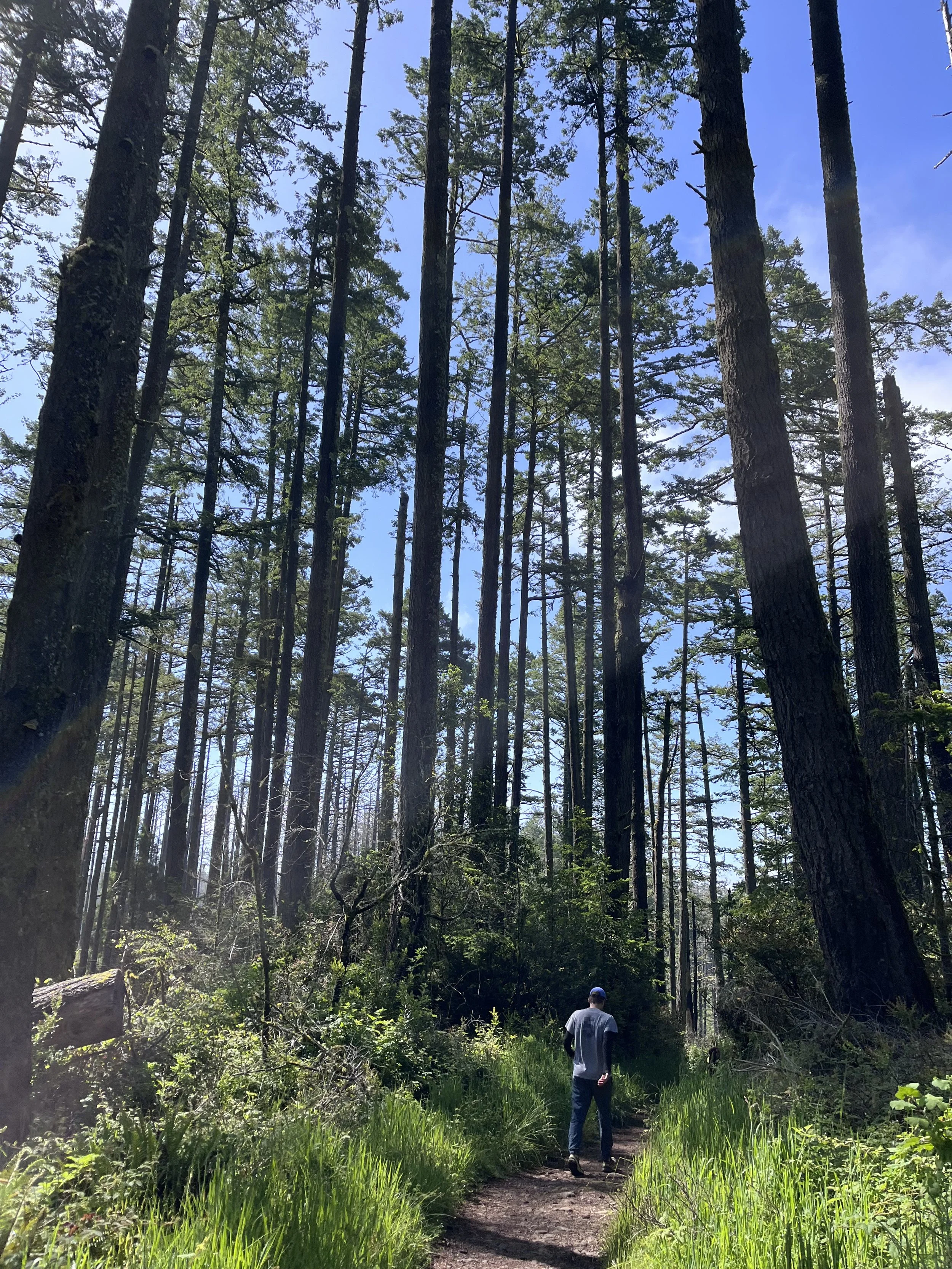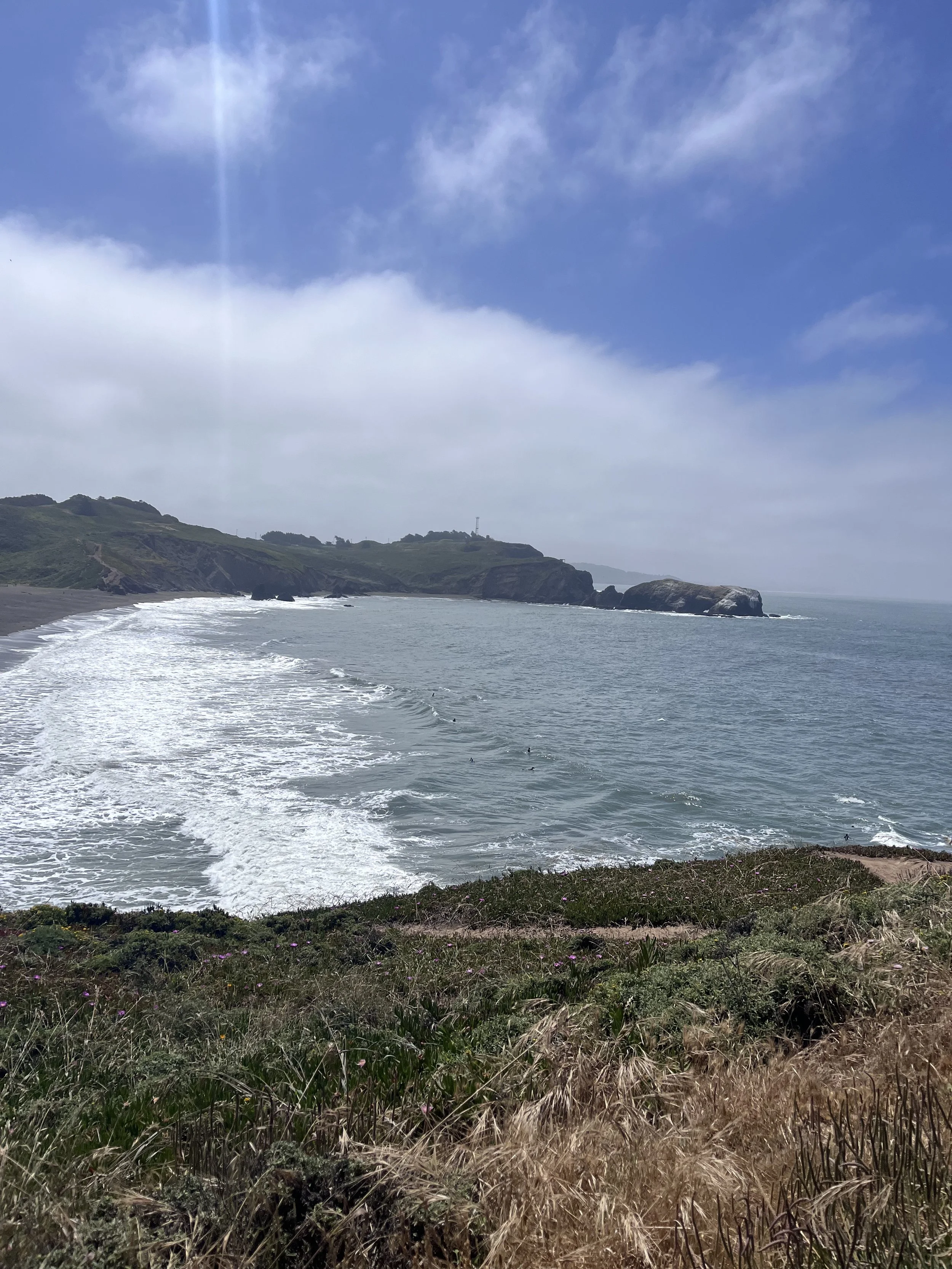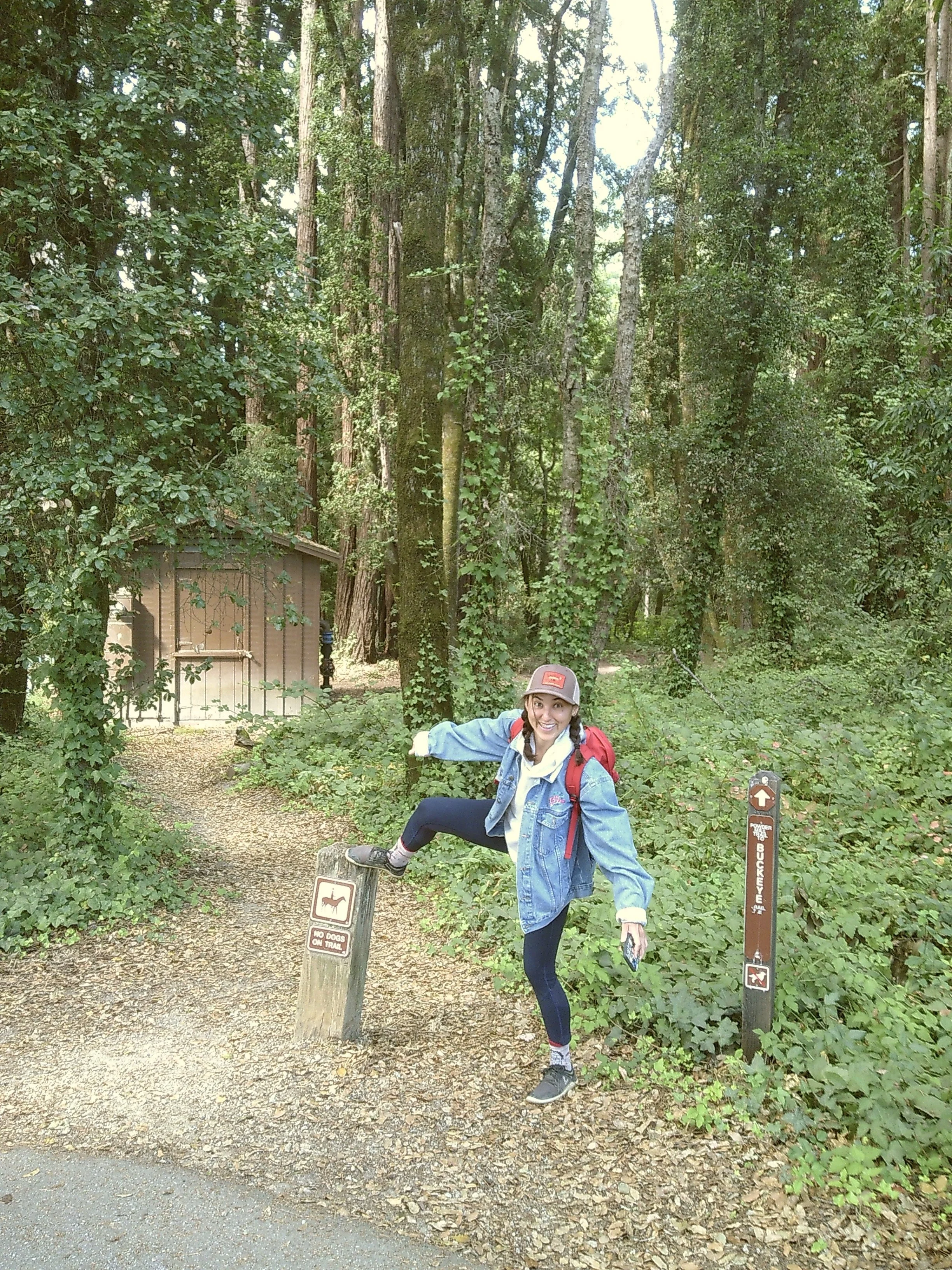A Kook Aunty’s Guide to the Legend of Naupaka
Years ago, I trailed slowly after my mom, barefoot as always. Likely, my rubber slippers had been left at home once again. Though my feet were hardened from years of never wearing shoes, traversing pavement and lava rock, it was still challenging to navigate across the pokey brown fruits of the Ironwood trees which littered the sand of Sherwood Beach Park in Waimanalo.
Sherwood Beach was my mom’s favorite location for neverending beach days. Not a fan of the crowded shores and quickly bored by the smooth waters of Kailua Beach, she’d haul us out to this small town where she’d first started her career after moving to Hawaii.
That trip, however, would not consist of our usual agenda: sitting for hours in beach chairs, playing in waves, boogie boarding, and putting meat tenderizer and vinegar on the man-o-war stings I would inevitably get. No. On this trip, we were collecting Naupaka samples for me to take home for my seventh-grade science project
Why am I writing a blog post about Naupaka?
I loved growing up in the ‘90s, but feel like there was an unfortunate belief back then that people could be either right-brained or left-brained. Creative of analytical. There didn’t seem to be a place for people who enjoyed both the arts and statistics.
I was an artist and a writer. I would never be good at science.
This resulted in a detailed proposal about why my experiment revolved around the Naupaka plant and very little rigor around the work involved in the scientific method.
Now that I’m older, I’ve discovered a beautiful hybrid between creativity and science. I’ve read books by authors whose ability to write creatively about complex topics inspires me and made me revisit the question I asked so many years ago.
I’ve also recently become interested in native plants and ocean-friendly gardening. As an indigenous plant to Hawaii, Naupaka is a useful plant to use on the islands for gardens that will help with erosion.
What was the question about Naupaka that I asked all those years ago?
My question stemmed from a legend.
Legends are stories told to keep histories alive and teach newer generations what they must know, even if it’s things the storyteller does not understand. And, of course, I was (and still am) a sucker for them.
Growing up in Hawaii, I was never hungry for legends. There were legends of tourists driving down the Pali Highway, stopping to pick up a hitchhiking woman who turns out to be Pele who lights a cigarette with the tip of her finger. There were the legends of the Night Marchers, told to me at sleepaway camp by our six-foot-something Kumu Tai. I would later scream about these spirits to friends as a twenty-something when we got lost in the bamboo forests of Maui. There were legends of the demi-god Maui who fishes the islands out of the sea. And there was the legend of Naupaka.
Naupaka was a plant I was all too familiar with having spent most of my days at Sherwood Beach, walking past one of the variants nearly every weekend.
I can’t remember when I first heard the legend of the plant. I feel like I’ve known it as long as I’ve known the plant existed, though I’m sure that can’t be right.
There are a few versions of this legend, but the one that sparked my curiosity as a seventh grader resulting in my half-hearted attempt at scientific experimentation goes something like this…
The Legend of Naupaka
Once there was a beautiful, kind, beloved princess named Naupaka. She was sister to Pele, the mighty and often vengeful goddess of volcanoes and fire.
One day, Naupaka met a very handsome fisherman named Kaui. The two fell in love and decided they wanted to get married. Princess Naupaka, always gracious, went to her sister Pele to ask permission.
It turned out that Kaui’s good looks were a bit too good. Pele saw him and decided that she wanted him for herself. Feels a bit like Love Island here and when Pele asked if she could pull him for a chat, he was clear that he was closed off with Naupaka (if you don’t want Love Island this means he still wanted to marry Naupaka). At Kaui’s rejection of her, Pele launched into a ferocious rage.
The two lovers fled, but there was no saving them. As Pele through flames at them, Naupaka plucked a flower from her hair. She split it in half. Half she gave to Kaui and half she kept for herself, a sign of their love.
Pele’s other sisters, taking pity on the two, transformed Naupaka and Kaui into plants. One to grow in the mountains (Naupaka Kuahiwi) and the other to grow down by the beach (Naupaka Kahakai). Each produces a flower, but the flower is only half of a blossom.
You can bring one half from the mountain and one from the sea to reunite the two lovers.
Inspired by the legend, I proposed the question:
Are the two species restricted by their unique biologies, only able to grow in their individual locations?
Or could they survive in each other’s environments (Naupaka Kuahiwi at the beach and Naupaka Kahakai up in the mountains)? At the very least, could they both be able to survive in a hybrid sand/mountain setting?
In other words, I wanted to know if from a planting perspective, could Naupaka and Kaui ever be reunited naturally.
What’s funny is that even today, when I tried to find the answer to this question online (I was sure someone would have answered my silly seventh-grade question by now), I find most websites and journals reference the legend as opposed to the evolution of the plant itself.
What type of soil does each Naupaka species require?
I have been able to find the soil types required for Scaevola sericea (beach Naupaka) which are sandy, high-pH, and clay soils according to the College of Tropical Agriculture & Human Resources from UH while according to Native Plants Hawaii, Scaevola gaudichaudiana (mountain Naupaka) prefers moist conditions with cinder and organic soils.
This would suggest that the two aren’t able to grow beside each other even if they have other similar characteristics, one having evolved for the rainforest and the other the beach.
Still, I do wonder whether it’s worth a second attempt at this experiment during a future trip home.
Perhaps, instead, I can use this as motivation to explore all aspects of the island. Heading to the mountains for a hike to find one half of a Naupaka flower to bring back down to the beach to be reunited with the other.





